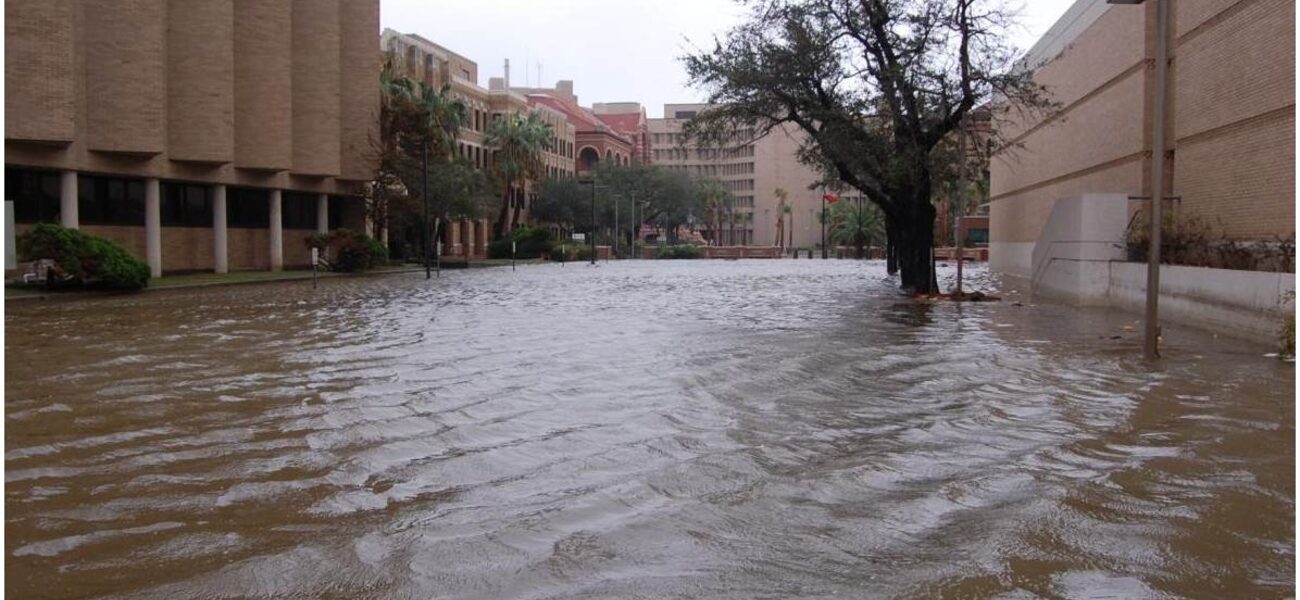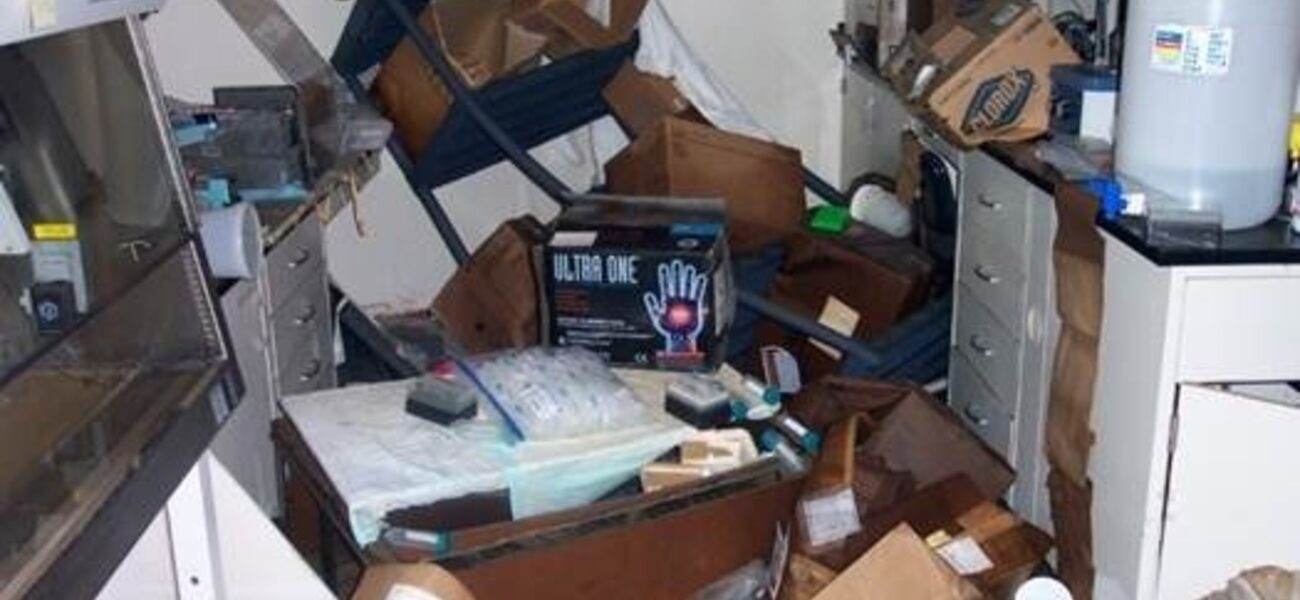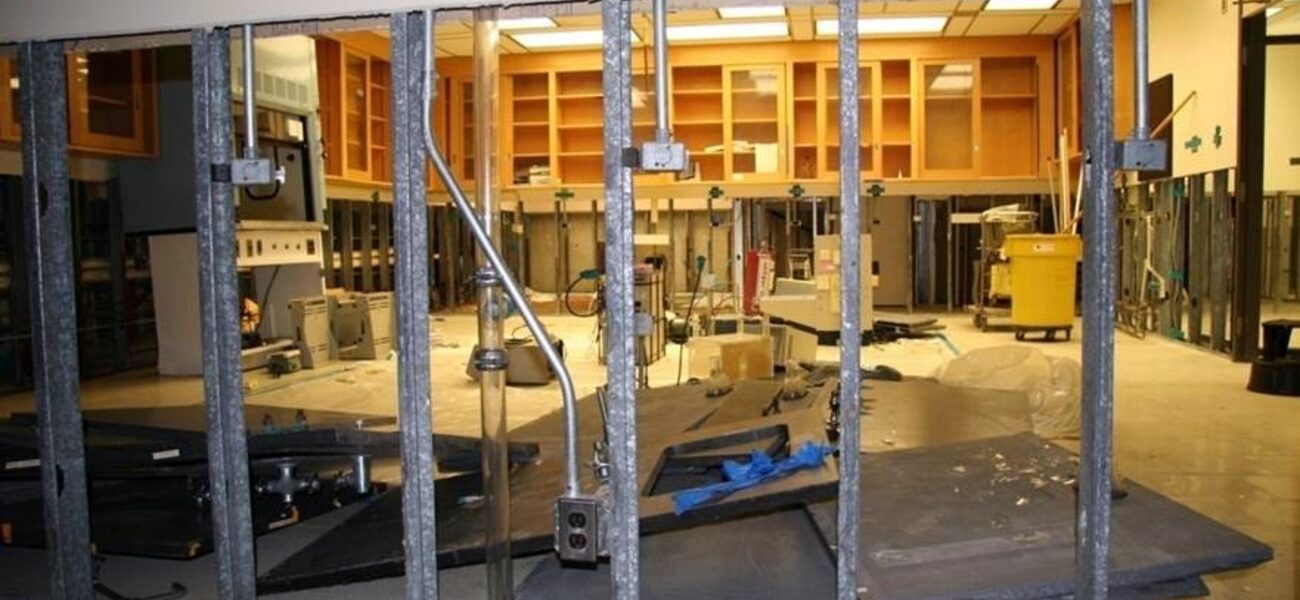Recent high-profile natural disasters and human-based incidents are driving vivarium facility owners to reevaluate their disaster and contingency plans. Traditional approaches to risk assessment and research preservation are often over-simplified, understaffed, and insufficiently funded. A new shift in thinking focuses on preparing for the net results of losing utilities, an entire building, or access to a section of campus rather than the initial causes. Costly animal and research losses in recent years are also leading to adoption of new best practices that include preparing for up to 30 days without critical infrastructure, moving animals out of high-risk locations whenever possible, and doing a thorough risk-assessment and recovery plan for all potential contingencies.
“Regardless of whether the cause is a fire or a flood, the real issue is that you don’t have sewer or electricity, or you don’t have a building, or you can’t get staff to it. These are the things that a disaster plan needs to address,” says John Donaho, president of JCD Consulting, a specialist in disaster planning for biomedical labs, educational institutions, and other facilities.
Plan for What Can Happen, Not How it Happens
Current approaches to risk assessment are focusing more on outcomes than causes. For example, while a loss of power can be triggered by any number of factors—from local fires to grid failures—what matters is having a contingency plan that preserves animal well-being and research integrity.
Emergency generators are vital for providing backup power to vivarium facilities, but only if they work when the time comes. This means that having a regular ongoing maintenance schedule is crucial. The physical location of both generator and fuel are also significant concerns.
“We’ve seen several situations where generators were housed in risky locations,” says Donaho. “They were located too low to protect them from flooding or they were up on the roof and got taken out by a tornado. Likewise, if the fuel is in a risky location, you can have a perfectly fine generator but no way to get fuel to it.”
“We use natural gas backup generators,” says Bill Throop, director of project management and construction services at the University of Texas at Austin. “This seems to solve the problem of limited liquid fuel storage capacities unless, of course, natural gas goes down as well.”
Water Can’t Be Stopped
Adequate disaster assessments for vivarium facilities must also account for each facility’s relationship to flood zones, sea levels, and other exposures like water main breaks.
“Flooding is probably the most disastrous thing that can happen to an institution or a facility, because you cannot hold back floodwaters,” says Donaho. “It creates the potential for massive loss, not only of animals, but also years and years of invaluable work supporting researchers and post-doctoral students who are often operating on grant deadlines.” Staff is also placed at risk.
Destroyed research is one of the most devastating and difficult costs to quantify or recover. And one thing many institutions unfortunately discover only after a disaster is that FEMA compensates based on the estimated price of each lost animal, not the value of lost research.
“You could have invested as much as $100,000 in a mouse, but FEMA is only going to reimburse you for the standard catalogue price of that mouse,” says Donaho.
When it comes to location, Donaho recommends that animal facilities be situated at least 5 feet above any potential threat of flooding—including water main breaks and 100-year floodplains—but no higher than food and supplies can be manually carried. This means avoiding basement locations, where animals are especially vulnerable.
“Elevators are frequently knocked out of service during adverse events, and getting supplies to upper floors becomes a huge issue,” says Donaho. “Since staffing is minimal during these events, expending limited resources manually carrying food and supplies up multiple flights of stairs to top-level floors should be avoided.”
Liquid Nitrogen and Sub-Zero Sample Freezers
There are two schools of thought when it comes to protecting samples stored in subzero freezers. The first is to store all of them in a freezer farm with hardened infrastructure and the ability to switch to alternate cooling sources such as liquid nitrogen. The other is to distribute risk by locating minus-80-degree C freezers and samples in several different buildings or locations.
“We have many minus-80-degree (C) freezers and minus-152 (C) cryostorage freezers that run on electric power,” says John Shannon, safety manager for the University Health Network in Toronto. “For backup, we can hook up liquid nitrogen directly to the minus-152 (C) cryostorage units that automatically provide cooling in the event of an outage. We essentially have multiple systems in place for different types of redundancy and storage.”
One of the challenges with the “all eggs in one basket” approach is that a catastrophic event at that facility can potentially wipe out decades of research.
“We had a natural gas backup generator in a critical campus building on Galveston Island that had not failed in over 25 years,” says Donaho. “Then it failed during Hurricane Ike because we lost our natural gas supply to the island. All the samples located in those freezers were lost.”
Current best practice is to distribute the risk broadly by banking samples in collaboration with other institutions that also have the necessary hardened facilities and redundant cooling and power protecting the critical research.
Prepare for Infiltrators
Malicious infiltrators and saboteurs are a threat that is often overlooked in the development of risk assessments, but the damage they can do is incalculable. Because infiltrators are motivated by the desire to harm an institution’s reputation, they don’t go to regulatory agencies first; they go to the press.
“With an infiltration, the biggest loss is the loss of trust,” says Donaho. “You trust that the person you hired is honest. Finding out otherwise is very traumatic for the people who work with them. After the loss of trust comes institutional and personal reputations and perhaps funding. Then you have ongoing legal battles, investigations, more stories, and perhaps additional revelations months or years later.”
Subversive infiltration is difficult to prevent even with background checks. One thing organizations can do to protect themselves is maintain standard operating procedures and document everything they do at every step.
“If you document everything, it’s easier to withstand false accusations,” says Donaho.
The other critical step is to listen carefully for problems and respond to employee concerns immediately. People working in biomedical research strive for good research and compassionate animal care. If they believe there is a problem with the conduct of a project, management must be open at all times to listen and respond to those concerns.
Expect the Big One
The reality is that disasters are inevitable, and mechanical systems can always fail. Eventually something catastrophic happens. But there are things organizations can do to help prevent the loss of invaluable research and animals. This includes planning for going as long as 30 days without utilities.
“Previous plans were based on being back in business within three to five days,” says Donaho. “We’ve learned that, after a major disaster, you need to be ready for 30 days of no sanitary sewer, phones, or electricity.”
It’s also a good idea to move animals out of high-risk locations when there is an event coming.
“With Hurricane Ike, we had warning before the storm arrived,” says Donaho. “Because we knew exactly where the racks of cages were going in the new temporary location, we emptied a 15,000-sf facility, including a room of primates, in less than five hours. If you pre-plan correctly, you know exactly where those animals can go.” That might include a move to another institution.
Most importantly, institutions need to spend the time and resources to do a thorough risk assessment and planning process so they can provide the necessary response during a crisis. A well-conceived disaster plan greatly reduces the impact of damage and makes the recovery process go much faster.
“The president of the university or the CEO of the company really needs to be pushing it from the top,” says Donaho. “Because, just like with building new facilities, there is a lot of focus on cutting capital costs at the outset; but if you just spend a little more money, you can save a lot of operating costs on the other end. When we start totaling up the numbers of animals and the hundreds of years of research that have been lost in these sorts of disasters, we have to ask what level of risk we are willing to accept.”
By Johnathon Allen
This report is based on a presentation by Donaho at the Tradeline 2012 Animal Research Facilities conference.


